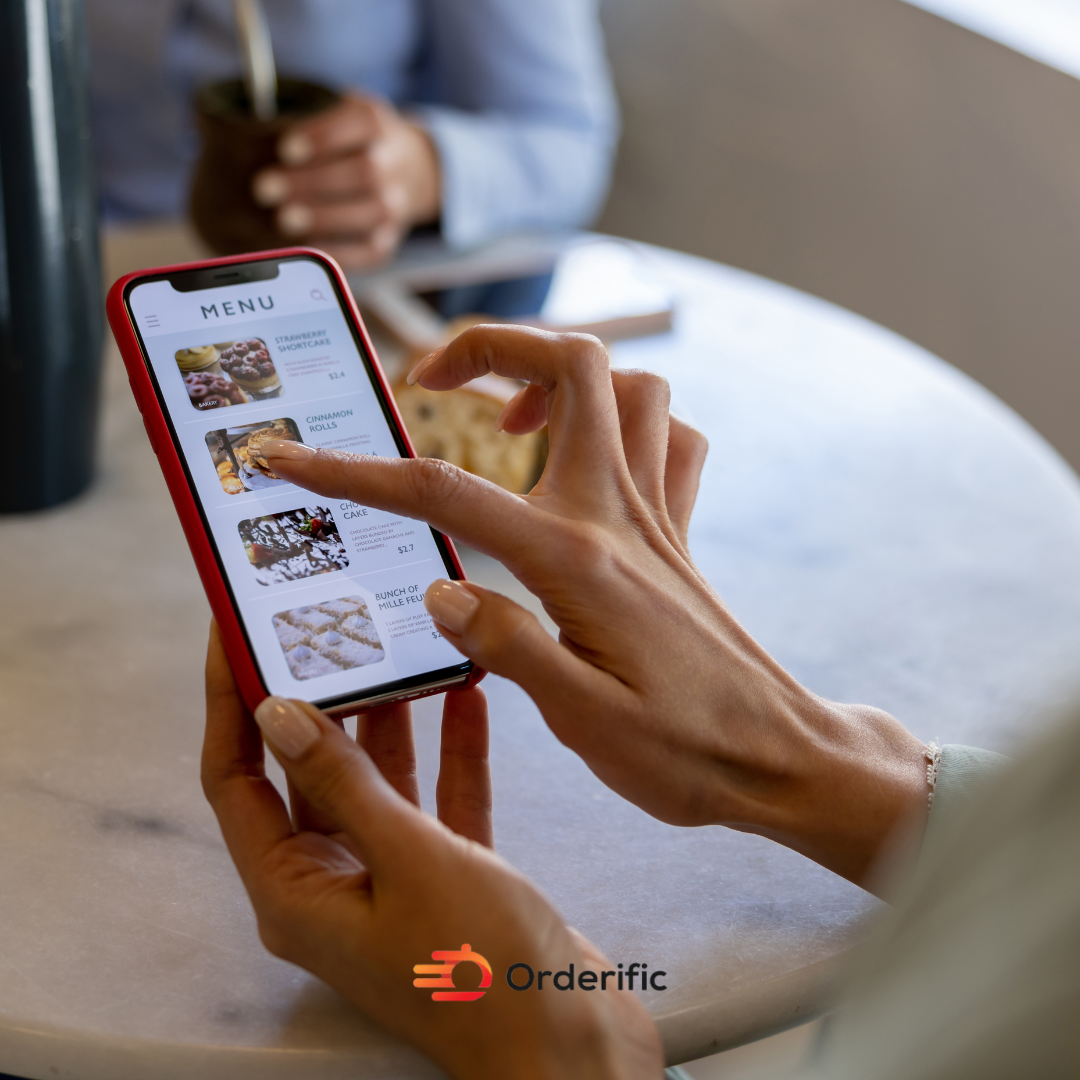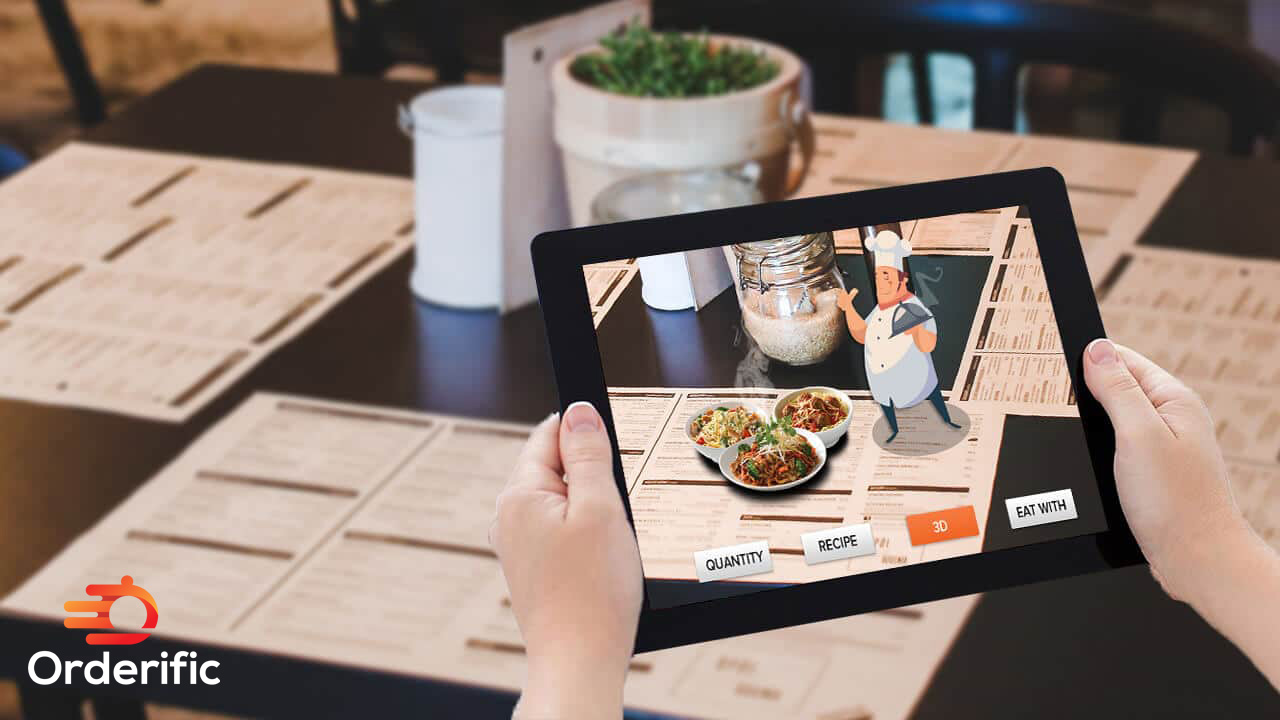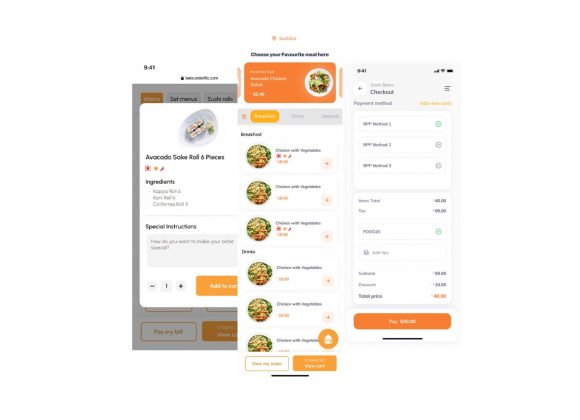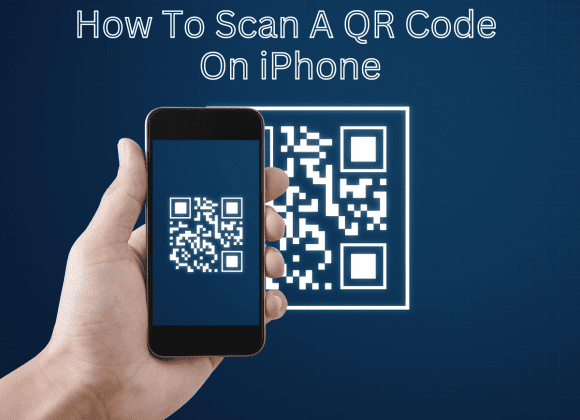Making the switch to digital menus for your restaurant can reap great rewards. From improved customer experience and service times to enhanced branding opportunities, digital menus offer tremendous potential for restaurants in today’s competitive online landscape.
Easily integrated into existing POS systems, these modern menu alternatives simplify ordering processes both in-house and online while providing a wealth of ranking data that owners can use to identify clients’ favorite dishes, better understand customers’ needs and expand their business strategies.
This blog post will explore the numerous benefits of incorporating digital menus into your restaurant. From streamlining order processes to unlocking new marketing opportunities, digital menu solutions offer a range of advantages worth considering. So, without further ado, let’s delve into the world of digital menus and discover how they can elevate your restaurant experience.
Types of Digital Menus for Restaurants
In today’s fast-paced world, everyone is looking for convenience at every turn. This is why even the world of dining has seen a significant shift towards digital menu boards. Digital menus for restaurants have become increasingly popular, and for good reason.
Being able to display and update menu items in real time has given restauranteurs the freedom to experiment with different dishes without printing out new menus or wasting materials. Some types of digital menus include –
- QR Code Menus: Customers scan a QR code displayed at the table using their smartphones, which takes them to the restaurant’s digital menu accessible through a web page. This type of menu is cost-effective, easy to update, and allows for contactless ordering.
- Tablet Menus: Some restaurants use tablets or iPads at each table, allowing customers to browse the menu, view images of dishes, and place orders directly from the device.
- Mobile Apps: Restaurants may have their own dedicated mobile apps that customers can download on their mobile devices. These apps typically offer menu browsing, order placement, payment options, loyalty rewards, and more.
- Digital Signage Software Menus: Large digital menu screens located throughout the restaurant display the menu and visually showcase the dishes. These dynamic menus can be easily changed and updated as needed, providing a decent digital signage solution using multiple screens.
- Online Ordering Platforms: Restaurants may partner with third-party online ordering platforms like Uber Eats, Grubhub, or DoorDash, which provide digital menus for customers to browse and place orders from their own devices.
- Interactive Kiosks: Some restaurants have interactive kiosks using a digital screen where customers can browse the menu, customize their orders, and make payments.
- Smartwatch Menus: In some tech-forward establishments, customers with smartwatches can access a condensed version of the menu right on their wrist.
- Voice-Activated Menus: With the rise of voice-activated assistants like Amazon Alexa and Google Assistant, some restaurants are experimenting with voice-controlled menus, allowing customers to place orders verbally.
While each type offers distinct advantages, they all share a common goal: enhancing the dining experience by increasing convenience and efficiency.
Features and Benefits of Digital Menus
With the constant evolution of technology, digital menus have gained immense popularity in restaurants and various establishments. These menus offer customers a distinctive and captivating experience, thanks to their ability to showcase dynamic images, text, and pricing. They have revolutionized the way information is presented, making dining more engaging and interactive for everyone involved.
In addition, updating menu items and prices is quick and easy, saving business owners time and money. Digital menus can also be customized to suit various dietary needs, displaying allergen information and cooking methods for each dish. The convenience and enhanced customer experience make digital menus a smart investment for any business in the food service industry.
Digital menus offer numerous features and benefits that enhance the dining experience for both restaurant owners and customers:
Features and Benefits of Digital Menus:
- Interactive Menu Items — Benefit: Engaging and informative dining experience with high-quality images and detailed descriptions.
- Real-time Updates — Benefit: Customers always see the most current offerings and special offers with menu updates, leading to increased satisfaction.
- Multilingual Support — Benefit: Accommodates diverse customer bases and attracts international visitors.
- Personalization — Benefit: Provides personalized recommendations, fostering customer loyalty and repeat business.
- Promotions and Specials — Benefit: Highlights daily specials and deals, boosting sales and encouraging customers to try new dishes.
- Contactless Ordering and Payment — Benefit: Reduces contact and wait times, enhancing safety and efficiency.
- Allergy and Dietary Information — Benefit: Helps customers with specific dietary needs make informed choices, promoting inclusivity.
- Integration with POS Systems — Benefit: Streamlines order processing, minimizing errors and improving overall efficiency.
- Customer Feedback and Ratings — Benefit: Provides valuable insights for continuous improvement and better customer satisfaction.
Benefits of Digital Menus for Restaurant Owners:
- Cost Savings: Eliminates printing costs and reduces paper waste.
- Time Efficiency: Speeds up the ordering process, leading to faster turnover times.
- Flexibility and Adaptability: Allows quick adjustments to menu items and prices.
- Data Collection and Analytics: Provides valuable data on customer preferences and ordering patterns for data-driven decisions and improved marketing strategies.
Benefits of Digital Menus for Customers:
- Enhanced Experience: Enjoyable and memorable dining experience with appealing visuals and easy navigation.
- Reduced Wait Times: Contactless ordering and payment options reduce waiting times, increasing customer satisfaction.
- Modern Image: Showcases the restaurant’s commitment to technology and innovation.
- Upselling Opportunities: Eye-catching visuals and personalized suggestions lead to new culinary experiences.
- Inclusivity: Detailed allergen and dietary information cater to specific needs, ensuring an inclusive dining experience.
Digital menus optimize restaurant operations, improve customer satisfaction, and foster a modern and efficient dining environment.
How to Design a Digital Menus
The modernization of technology has revolutionized several businesses, and the food industry hasn’t been left out. One of the trends that’s spreading swiftly in the restaurant business is the use of digital menus. These menus offer various benefits, from the ease of editing to the reduction of printing costs.
However, designing the perfect digital menu can be quite challenging. So we at Orderific have made it our mission to make designing a digital menu super easy! To design a digital menu using Orderific, follow these steps:
1. Sign Up and Login to Orderific:
- Visit the Orderific website and sign up for a FREE account as a restaurant owner.
- Login to your Orderific account to access the menu design platform.
2. Create Your Restaurant Profile:
- Fill in the necessary details about your restaurant, such as the name, location, contact information, and operating hours.
3. Create Menu:
- Choose a layout template that suits your restaurant’s brand and theme.
4. Add Menu Items:
- Easily add and categorize menu items (appetizers, entrees, beverages, etc.).
- Include enticing food images, descriptions, and prices for each dish.
5. Highlight Specials and Promotions:
- Utilize features to highlight daily specials, happy hour deals, or limited-time promotions.
- Engage customers with eye-catching banners and call-to-action buttons.
6. Integrate Allergen and Dietary Information:
- Provide detailed allergen and dietary information for each menu item in order to cater to specific customer needs.
7. Enable Contactless Ordering:
- Utilize Orderific’s contactless ordering feature, thereupon enabling customers to place orders directly from their smartphones.
8. Implement Real-time Updates:
- Ensure menu items, prices, and availability are updated in real-time to avoid any discrepancies.
9. Preview and Test:
- Before finalizing, preview the digital menu to ensure it is visually appealing and user-friendly.
- Test the ordering process to ensure it works smoothly for customers.
10. Publish Your Digital Menu:
- Once satisfied with the design, publish your digital menu on the Orderific platform.
With creativity and attention to detail, designing a digital menu can undoubtedly enhance the dining experience for your customers.
How to Implement a Digital Menu at your Restaurant
In this digital age, customers expect fast and convenient service in all aspects of their lives, including dining. A digital menu is a perfect solution for restaurants to keep up with these expectations.
Implementing a digital menu at your restaurant can be achieved in just five simple steps:
- Choose a Digital Menu Solution: Research and select a digital menu provider that emphatically fits your restaurant’s needs and budget.
- Customize Your Menu: Create an account and customize the menu layout, colors, font, and add your logo.
- Upload Menu Items: Add menu items with descriptions, images, and prices into the digital menu system.
- Enable Contactless Ordering: Set up contactless ordering, allowing customers to order from their smartphones.
- Train Staff and Launch: Train your staff, inform customers, and launch the digital menu at your restaurant. Afterwards, monitor its performance and gather feedback for continuous improvement.
Conclusion
Digital menus can revolutionize the restaurant industry, offering customers faster, more efficient service and better options for personalizing their ordering experiences. Restaurant owners can customize digital menus with different shapes, designs, colors, and images to capture your customer’s attention and contribute to the overall ambiance of their business.
Additionally, digital menus bring you many benefits, including increased profits, improved customer engagement, and a better chance of upselling opportunities. By taking the time to design the perfect digital menu for your restaurant establishment, you ensure that it effectively captures your customer’s attention and, in like manner, encourages them to purchase more food items from your menu.
With such great features and benefits available through digital menus, you owe it to yourself as a restaurateur to investigate this innovative technology further waiting any longer. We encourage readers who would like to learn more about digital menus to ask questions in our comments section, and we will, by all means, get back to them promptly.
For more information on digital menus, read another Orderific blog on our website today!
FAQs
Q. How do digital menus enhance customers’ dining experience and streamline restaurant operations?
Ans. Digital menus enhance the dining experience by providing engaging visuals, quick access to information, and easy ordering while streamlining restaurant operations through efficient updates and reduced printing costs.
Q. What are digital menus’ key features and benefits, such as interactive visuals, allergen information, or real-time updates?
Ans. Key features of digital menus include interactive visuals for enticing presentations, allergen information for customer safety, and real-time updates for menu changes and promotions.
Q. Can you provide insights into the technology used for digital menus, such as touchscreens, mobile apps, or QR codes?
Ans. Digital menus use various technologies like touchscreens for interactive ordering, mobile apps for remote access, and QR codes for contactless menu retrieval.
Q. Are there any challenges or considerations to keep in mind when implementing digital menus, such as accessibility, user-friendliness, or maintenance requirements?
Ans. Considerations for implementing digital menus include ensuring accessibility for all customers, maintaining user-friendly interfaces, and addressing maintenance requirements like reliable internet connectivity and software updates.













